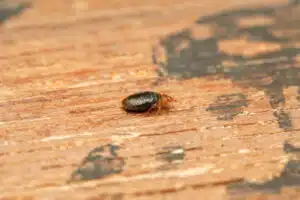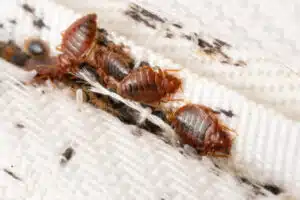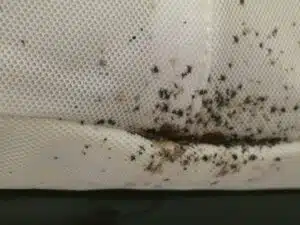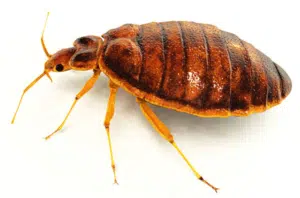Cockroaches Vs. Water Bugs
While there are many types of bugs, two very common ones are cockroaches and water bugs. Though they may look similar, there are some key differences between these two pests that you should know if you’re having trouble getting rid of them. This blog post will explore the differences between these two types of bugs and provide some information on how to get rid of them.
Cockroaches Vs. Water Bugs: How to Tell The Difference
Cockroaches and water bugs are different types of insects, but their appearance can easily distinguish them. The giant water bug, also known as toe biter, electric-light bug, or alligator tick, is the most common species of water bug. Unfortunately, two cockroaches often get mistaken for these bugs: the reddish-brown American roach and the shiny black oriental roach. Therefore, considering their differences can be a great help for effective cockroach and water bug control.
Appearance
Unlike common house cockroaches, which are always smaller than water bugs and about half an inch large, most species of water bugs are 3.8 cm long and relatively large. The American roach is the only roach similar in size to a water bug. While you can distinguish water bugs by their yellowish figure-eight pattern on the back of the head and tan to black color. Cockroaches, on the other hand, are typically light tan to dark brown. They both have oval-shaped and flat bodies, antennae, and wings. Water bugs have piercing mouth parts and a short, pointed beak on the underside of the head.
Habitat
Water bugs are mostly found in or around water sources like ponds, streams, and lakes, while cockroaches are often seen in warm and humid environments. In terms of where they live, waterbugs typically reside outside in gardens or near puddles. If they do find their way into your home, it is only for a short period of time as they will quickly die without a water source. Cockroaches, on the other hand, are more likely to stay inside your home as they can survive for long periods of time without food or water.
Diet
Cockroaches are scavengers and opportunistic eaters who can consume a large variety of products. For example, they’ll eat leather, bread, and even dead animals. Water bugs often kill insects or small fish while hunting for other prey, such as frogs and invertebrates.
Bite Risk
While cockroaches rarely bite humans, water bugs have been known to do so. If a water bug does bite you, it will likely leave a red welt that is painful and itchy. Water bug bites are also more likely to become infected than cockroach bites.
How to Get Rid of Cockroaches and Water bugs
The best way to get rid of cockroaches is to remove their food and water sources. This means sealing up any cracks or crevices where they might be able to enter your home, as well as fixing any leaks that might be providing them with a water source. You should also regularly vacuum and clean your home, as cockroaches are attracted to dirty environments.
If you have a water bug problem, the best solution is to eliminate the water source. This means fixing any leaks in your home and ensuring there is no standing water around your property. You can also try using traps or bait to get rid of them.
While getting rid of cockroaches and water bugs can be challenging, it’s important to remember that these pests are not dangerous to humans. However, they can be a nuisance, so it’s best to take steps to get rid of them as soon as possible.
The best way to get rid of cockroaches and water bugs is to call a pest control professional. They will be able to identify the type of bug you have and provide you with the best course of treatment.
If you have any further questions about cockroaches vs. water bugs, or if you would like to schedule a free consultation, please contact us today.
Related Articles

Tick vs. Bed Bugs: Differences and Similarities
Understanding the differences between two common blood-sucking pests, ticks and bed bugs, is important. We want to make sure you know exactly what kind of pests you’re dealing with,

Where Do Bed Bugs Come From, and How to Prevent Them? A Guide for Salt Lake Residents
Bed bugs can be a major nuisance and cause various physical and emotional problems, including skin irritation, anxiety, and sleep disturbances. In Salt Lake City, bed bugs are a growing concern, especially in apartment buildings, hotels, and other high-density living spaces. But where do bed bugs come from, and how can you prevent them from infesting your home or property?

Are All the Tiny Black Bugs in My Bed Bed Bugs?
Sleeping is one of the things that we look forward to after a very long day. We recharge ourselves by sleeping by the end of the night to be refreshed the next day. But we can be disturbed even during our sleep by pesky pests crawling and hiding where we sleep. That’s terrifying, right? Pests that are known to annoy us during our sleep are bed bugs. They are usually found where humans and other pets sleep. Bed bugs can be almost anywhere in the world – even in your Saltlake home! They can be annoying because they suck your blood and leave you with an itch and bumps in the infected area. So blood attracts them, even the blood of other animals. Therefore, you should conduct bed bug removal if you have them. If you find bugs on your beds, you might think they are bed bugs. But are they?

Can Bed Bugs Live in Your Car?
Bed bugs are small, flat, and oval-shaped insects that feed on the blood of humans and animals. During the day, bed bugs hide in cracks and crevices around beds, furniture, and baseboards. You can also find them in mattresses, bed frames, blankets, carpets, and other fabric items throughout your home. While it is possible for bed bugs to infest your car, they’re less likely to do so than inside a house or other structure.

How to Find Bed Bugs in Your Home
Bed bugs are small, blood-sucking that feed on human and animal blood. They belong to the family Cimicidae, contain over 100 species, and have been around for millions of years.

Can Bed Bugs Jump?
Bed bugs are a common household pest that can be difficult to get rid of. These tiny insects can live in any crevice or crack in your home and feed on blood.
